Don't wanna be here? Send us removal request.
Text
Creepiness
What makes something creepy? Scroll down to the bottom of this post and you’ll see some “creepy” images. But what makes these images creepy?
Nothing is wrong with these photos; there is no immediate danger or threat present in any of them, so why should we have any reason to fear them? Despite the fact that there is nothing bad, dangerous, or scary presented in these photos, we are still reluctant to look at them. We are not afraid of these images, we are just unsettled. I was even reluctant to look up creepy images for this blog post because I feared what I might find. You may also have glanced these as you scrolled through your tumblr feed and had your heart jump at the sight of them.
The key principle of what makes something creepy, is the sense of ambiguity surrounding it. For most of the photos below, they are almost completely normal, but not entirely normal. There is something about them that is slightly off. This off-putting aspect is what makes them creepy. When we look at these images, our brain cannot determine whether what we look it safe or not. That’s why so many dolls are creepy. They look human enough, but our brain cannot tell if they are actually human or not. Because of this ambiguity, our brain cannot judge if these things are something to be avoided or not. We avoid creepy things because we just don’t know if these things will hurt us or not.
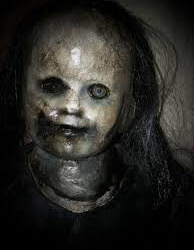

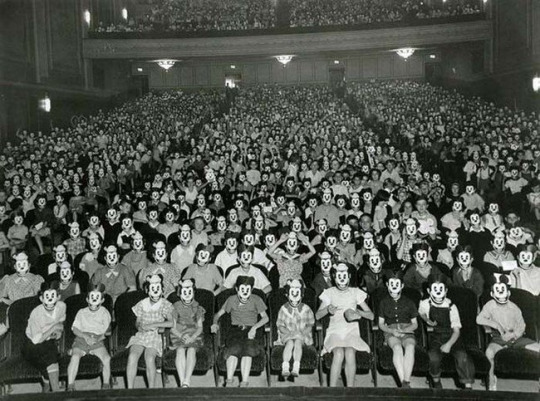
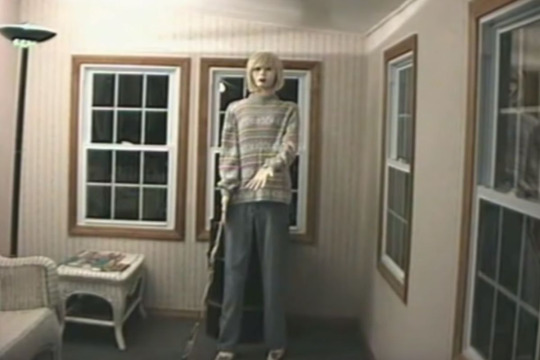
6 notes
·
View notes
Text
Antarctic Isolation
What is the most remote place on earth? Eastern Russia? Northern Canada?Point Nemo? Svalbard? Some obscure island in the middle of the pacific?
Well, one of the top contenders for the “Most Remote Place on Earth” title is Antarctica. Antarctica wasn’t seen by human eyes until 1820 and wasn’t even landed on until 1893. Antarctica is vastly unexplored and is not owned by anyone, though several countries have made unofficial claims. Antarctica is dotted with research bases, most along the coast, however some can be found more inland, near the south pole. With all these research bases it would seem that Antarctic isn’t as isolated as everyone initially makes it out to be. And that’s true... sometimes.
Throughout the year, New Zealand sends around 100 flights to Antarctica, each one carrying anywhere from 30 to 80 passengers. Other countries send a similar number of flights (as well as boat trips in the more southern countries) each year. People will be travelling to and from Antarctica all the time, every day. However, this can’t happen for the entire year. When winter comes in Antarctica, all travel to Antarctica stops dead in it’s tracks. During this 7 month period (late February to early November) there is no sunlight at all. The average temperature drops to -49 degrees Celsius at the pole, and -10 on the coast. The planes that land in Antarctic, while they are well suited to the cold, they are not completely impenetrable to temperature. The reason air traffic stops during these seven months is because their fuel will freeze within minutes of them landing. Most of the ports are blocked off by thick sheets of ice, so all boats have to stop too.
This complete halt in transportation means that, if you are in Antarctic when the last plane leaves, you are stuck there for more than half a year. Many people have to stay behind to maintain and take care of the research facilities. 45 people have to stay behind to take care of the research base at the south pole every year. These poor souls have to spend all that time in one of the harshest environments in the world, cut off from the outside world. To put this in perspective, these people in Antarctica are more isolated than the astronauts on the ISS.
So, whenever you are feeling alone, just remember that there are people who have to spend 7 months, physically cut off from the rest of the world, shrouded in constant darkness and coldness.
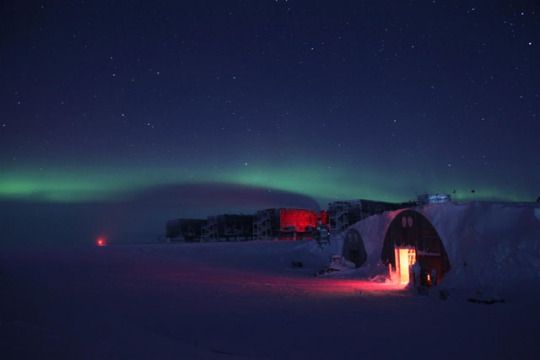
3 notes
·
View notes
Text
Getting Stuck in Barcelona
During the summer of 2017, I went on a trip to Europe with my extended family. In the middle of the trip we had to fly from Mallorca to Barcelona. From there, we were due fly to Lisbon, Portugal. When we landed in Barcelona, my immediate family needed to pick up our luggage and check it on to the next flight. Everyone else in our group had brought only carry on luggage. So we were the only ones who had to wait for checked baggage. That difference proved to be a big deal.
We waited a long time for our luggage to come out. By the time it finally did, we (my brothers, my mom, and myself) discovered that we had missed the check-in window for our next flight. The people at the counter told us we’d have to wait for the next available flight to Lisbon...which was in SIX DAYS. I wasn’t sure what we were going to do. Our trip back to the United States was in five days - and it was due to leave from Lisbon.
My mom immediately began racing around the airport, trying to find another flight to Portugal. We went to every airline in the building and they all told us the same thing; “All of our flights to Portugal are full. There will not be an opening for at least a week.” Panic began to set in, as we got more and more desperate to find a flight. In the chaos we almost lost our passports. Luckily I remembered where we left them and grabbed them before they were stolen.
Things started to look hopeless. At one point, I suggest we cut our vacation short and find a flight back to America. Eventually, after more than four hours of searching (and some begging), my mom found a flight scheduled to fly to Seville the next morning. It was miles away from where we needed to go in Portugal, but it was close enough.
So with place tickets in hand, the next challenge was to find an available hotel room in Barcelona. It was August, the height of the tourist season in Europe. I looked over my mom’s shoulder as she searched on line. The results weren’t promising. The travel app told us that 99.5% of the hotels in Barcelona were full. We could only find 5 in the entire city that had availability. We settled on the cheapest one, hopped in a cab, and wandered around Barcelona (towing our problematic luggage behind us), while we waited for our hotel to open. After a few hours, we were finally able to get into our room.
When we got settled, we called our family and let them know that we were okay. My Uncle Doug agreed to drive to Seville in the morning and drive us back to the house where everyone was staying. That night in Barcelona, I barely slept a wink. I was so afraid that we’d miss our second flight and that we’d be permanently stranded in Barcelona. We got up insanely early that morning and arrived at the airport a full 3 hours in advance. We eventually got on our plane and flew out. We landed without incident, met up with my uncle, and drove to meet up with the extended family.
This whole disaster in Barcelona probably set us back an extra thousand dollars and gave my mom a whole bunch more grey hairs. It also taught my family a valuable lesson. From now on, we only travel with carry on bags. No more checked luggage for us.
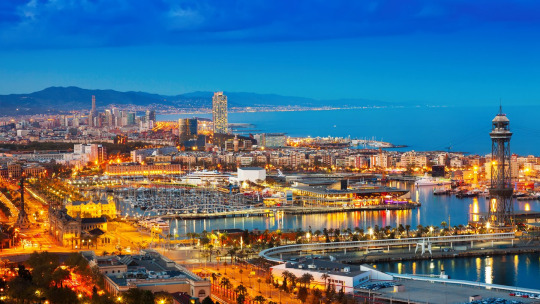
1 note
·
View note
Text
String Theory
String Theory is a theory about the very fabric of reality and how everything works. While most people recognize the term ‘String Theory’, not many fully understand what the theory is or why it was created. That’s understandable - it’s a pretty complicated concept. So I am going to take a shot at explaining what it is, how it works and why it matters to us.
Elementary particles are the smallest known things in existence. They are the subatomic units that make up atoms and can be found in various configurations. When humans first discovered these tiny particles, they wanted to use them for scientific purposes. However we couldn’t determine their size or shape because they were smaller than the photons we would have used to detect them visually. To address this situation, scientists created an idea called the “point particle”. Basically it was an idea for how to accurately graph elementary particles. It involved pretending that each particle was a shapeless point on a graph. This graph could be used to determine a particle’s location and associated sphere of influence. By applying these two variables (and not shape and size) scientists were able to graph elementary particles and use them in science. This predictive method was accurate up to 0.0000000000002%. The idea of point particles eventually became the basis for all of quantum physics.
There was, however, one glaring issue. Gravity. Gravity is a geometric theory that requires precise shape and size measurements. Yet, because quantum physics relies on location & sphere of influence measurements, it is not compatible with the geometric needs of gravity. Physicists tried to work gravity into the point particle equation by creating particles called gravitons. However, when gravitons were added to the rest of quantum physics, the math fell apart and became wildly inaccurate. So with no representation of gravity in quantum physics, scientists had to come up with another explanation that could marry quantum physics and gravity. The explanation they came up with was String Theory.
The goal of String Theory is to create a framework that unites the four key forces of nature; electromagnetism, the strong nuclear forces, the weak nuclear forces, and - importantly - gravity. String Theory theorizes that particles are strings. Different particles are created by different vibrations and frequencies (just like how different vibrations and frequencies of strings on a violin produce different notes). All of these different strings are threaded together in one massive framework, spanning the entire universe, making up everything in it. The thing about String Theory that made it so famous was that it successfully integrated gravity (in the form of gravitons) into quantum physics without having the result equations fall apart.
String Theory is still a working theory. However, if it is proven to be true it will have amazing connotations. It will help us advance science and understand how complex things like quasars and the information paradox work. If we can prove String Theory, we will be able to understand the fundamentals of how everything works, because we will be able to understand the framework of the universe down to the most minuet level.
1 note
·
View note
Text
Origins of Thanksgiving Food
Like the rest of you, over break I enjoyed a Thanksgiving meal with my family. It included all the traditional Thanksgiving fare; turkey, mashed potatoes, stuffing, green beans, cranberry sauce, gravy, and pumpkin pie. While I ate, I began to wonder about this meal. Specifically, why we eat this same assortment of foods, year after year. When asked, my mom said it was because they are “traditional Thanksgiving foods”. But how and why did they achieve that status?
I did some research and found that the traditional Thanksgiving meal has changed a lot over the years. If we go back to the first Thanksgiving, we notice a lot of stark differences in the foods that were served. First, turkey wasn’t the centerpiece of the meal. That title went to other types of birds like goose, swan, passenger pigeon, and duck. They weren’t stuffed with bread, but instead, with a mixture of onions, herbs, and nuts. Other meat could also be found at the table like deer, eel, lobster, clams, mussels, and shellfish. Bread could be found at the meal, except it was made from corn instead of wheat. Other commonplace items on today’s Thanksgiving table weren’t around at all. Foods like potatoes, wheat, butter and cranberries didn’t make the Thanksgiving scene until the mid-1700′s. So that means at the first Thanksgiving there were no pies, no mashed potatoes, and no cranberry sauce (which, in my opinion, are three of the best items we enjoy today). Also, back then beverage options were limited, so most colonist drank water.
This meal is drastically different from what we currently serve up for Thanksgiving dinner. So how did it evolve into its current state? Well, simply put, media pressure during the 19th century helped establish a norm. Many women’s magazines began to publish articles, encouraging women to celebrate Thanksgiving with a large, home-cooked meal. The meal described in these articles focused on ingredients readily available at the time. Items like potatoes, green beans, and wheat flour were plentiful back then. So, the Thanksgiving traditions of mashed potatoes, green bean casserole, and stuffing were born. Thanks to these 19th century magazines, the Thanksgiving meal changed from the more meat-reliant feast of the 17th century to one that featured multiple vegetable, fruit, and wheat based side dishes. That style is what we continue to enjoy to this day.
This whole process got me thinking. If the Thanksgiving menu has changed so much over the past 400 hundred years, how much will it change in the future? I’m willing to bet that future Thanksgivings will be as different from today’s Thanksgivings, as today’s Thanksgivings are from the very first one. With the exponential rate of change in society, who knows what future families will be sitting down to in the future. Let’s just hope mashed potatoes and stuffing survive the test of time.

1 note
·
View note
Text
Dodging the Draft
I went to my grandfather’s house over break. During dinner one night, he told an interesting story about an event that changed his life. It was the early Sixties and my grandfather was just starting out. He had graduated from Brown University earlier that year and had landed a job at a prestigious advertising agency in New York City. He spent weekends with his friends and had recently met a cool girl whom he really liked (she is now my grandmother). He was in his prime and was ready to live a great life. Then he received a letter telling him that his draft number had been chosen and that he would have to show up to have a physical taken in two weeks. This would determine if he was “fit to serve”. If so, he would be forced to join the US Army and serve in Vietnam.
This destroyed him. In the two weeks leading up to the physical, he had to cope with the fact that he might been sent off to war. Many of his friends had been killed in Vietnam and he was terrified at the thought of dying. Nor was he eager to abandon the promising life that he had just started to build. The night before his exam he didn’t sleep a wink.
When he arrived at the Army Center in New York to have his physical taken, he was grouped with other boys from Westchester county. They were ordered to strip down to their underwear and organize into a line. The men working at the center were big, with buzzed haircuts and camouflage pants. The yelled and shoved. My grandfather said he got a sense of what it would be like to be in the Army from being around those men. He said he got more and more anxious as the morning went on. Finally, after hours of waiting in his underwear, his physical exam was set to begin. His first stop was for a pressure check.
My grandfather stepped up to the table and had a gauge placed on his arm to check his blood pressure. A man pumped the device and subsequently checked the reading. My grandfather watched as the man’s eyes grew wide. The man un-pumped and re-pumped the gauge. He then turned and told my grandfather that his reading was so high that he was in danger of passing out.
They sat him down and had him wait. He waited there for the entire day, watching the other boys go through their physicals. At the end of the day, the man in charge of the operation walked up to him and began to talk. He explained that some men, known as “Draft Dodgers”, would take drugs to spike their blood pressure right before their physical. This would allow them to avoid being drafted. My grandfather denied that he was a draft dodger, but the man said he couldn’t be certain my grandfather was telling the truth. They told him that he would have to spend the night in a jail cell and come back the next day to re-take his physical.
He was taken to a prison on an island in the New York harbor and put in a large cell with sixteen other cellmates. His cellmates were all big, tough men covered in tattoos. They gambled and played games with knifes. All the while they taunted my grandfather, who was much skinnier and younger than they were. The prospect of a night in a cell with these men made my grandfather even more scared than before, since he was afraid that they would beat him up.
In the morning he went back to the Army Center and re-took the blood pressure test. Not surprisingly, the reading was even higher than before. My grandfather was told that he had been deemed unfit for the army and that he could go home. He said that day was the best day of his life. He could return to his family and the life he loved.
When I heard this story, I thought of what war could have done to my grandfather. Today he is a happy and accomplished man, but all that could have changed if he had gone to war. He would have lost his job and friends and would have had to experience the horrors of warfare. He could have been killed, permanently injured, or diagnosed with PTSD. I’m fairly certain that had he gone to Vietnam, he would not be the same person that he is today. So for that reason I am so glad that he failed his blood pressure test and avoided the draft.
His story also made me reflect on how grateful I am that the draft is a thing of the past (at least in this country). The idea of leaving my school, friends and family to go off to war is as terrifying to me as it was to my grandfather. I am thankful that I will not be forced into that situation now that military service in the U.S. is strictly voluntary.
4 notes
·
View notes
Text
“Hunger” - Lovely Sentence Pageant
The quote that I chose for the Pageant was: “Behind this painted wall, beneath this layer of new sheathing, hides the stories of our lives together.” (Page 14). This quote introduced us to the love life of Tian and Min, following the scene where they first met, in the restaurant. The literary devices that can be seen at work in this quote are symbolism and bit of personification. There is an underlying idea that Tian and Min are secluded for the rest of humanity; that their love is only displayed inside that room. Min highlights the walls and sheathing as a sort of barrier that isolates the inside of their home from the rest of the world. The tone is somewhat somber, but also somewhat hopeful. We feel somber when reading the sentence because we feel sympathy for the struggles they face. However, we also feel hopeful that they will find solace in each other, through their love. This sentence set the mood for the following paragraphs (bittersweet) and establishes their romance. I think that this sentence is effective because it tells us so much about their relationship and the rest of the story. They love each other, but loving each other is hard in the lives that they have, especially when they have children to support.
1 note
·
View note
Text
Permian-Triassic Extinction Event (The Great Dying)
Let me set the stage; It was roughly the year 252 Million BCE. The Entire Continent of Pangaea was in geographic turmoil. Large stretches of land were nothing but dry, arid deserts that blew hot air across the northern hemisphere. Other areas were covered in immensely dense vegetation that overproduced oxygen. This abundance of oxygen lead to creation of absolutely enormous creatures, like the 2 1/2 foot long dragonfly, the 7 foot long centipede, and the Helicoprion (AKA the saw-mouth shark). Outside of the thick jungle, anything without shade was scorched by the burning sun, which bleached the landscapes, turning it into a rusted red.
Now, you may think to yourself: “Wow, this time period sound like a nightmare to live in. At the very least it can’t get any worse.” You’d be wrong.
Around 252 million years ago, the environment broke down after millions of year of stress. Volcanoes and other similar structures began gushing out unprecedented volumes of lava, carbon dioxide, and hydrogen sulfide. This destroyed the atmosphere and the environment. The global temperature rose by nearly 7 degrees Fahrenheit killing many coastal populations of animals and plants. The toxic atmosphere disrupted a lot of the processes performed by plants, and soon the dense forest began to crumble. The forest became deserts and the deserts became deadly landscapes of tar pits and lava geysers. Nearly everything that had lived in this period went extinct. It is estimated that nearly 95% of marine life and 70% of all land creatures died.
The Permian-Triassic Extinction event was the most deadly extinction event in recorded history. It took the earth nearly 30 million years to fully recover from all the natural disasters. In the end it left of power vacuum in the ecosystem, since most of the dominant species had been lost. It wasn’t until the dinosaurs came along that Earth was able to move on from ‘The Great Dying’.
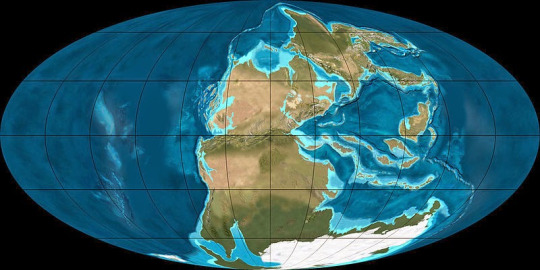
2 notes
·
View notes
Text
The Camp Lawrence Treasure Hunt
For the past 5 summers, I have been going to an amazing, sleepover camp. Camp Lawrence is a camp located on Bear Island, and island in lake Winnipesaukee, NH. While could talk about any number of the cool things you can do at the camp, there is one event that takes the cake. Camp Lawrence has four session, each two weeks long. The third session has the Treasure Hunt event and it lasts three days.
The treasure hunt is built up across the session with seemingly unscripted events like: Counselor disappearances, fake missing camper drills, and ominous signs carved into the sides of cabins. Eventually the treasure hunt will start with the campers being divided up by cabin, and the cabins will assemble into teams. The number of teams can be anywhere from two to ten. Each team participates in activities. Activities like a four way game of capture the flag, an island wide game of infection tag, and rotation of mini activities. For each game, the winners get a piece of a riddle that, when solved, reveals the location of a buried treasure chest.
These three days of competitions and games are probably the most hyped up and enjoyable part of Camp Lawrence. The treasure hunt ends with one final event called the Omnibus. The Omnibus is a race consists of sixty five activities. The four teams will go through the activities and then, once finished, will run as a team to where they think the treasure is buried. The team that digs up the treasure wins the Treasure Hunt.
I’ve won Treasure Hunt before and those moments when I’ve seen my team holding the treasure chest are indescribable. There are some of the strongest and happiest memories of my life. I’m going to end off this post, by urging everyone who reads this to try a session of Camp Lawrence (or the girls camp: Camp Nokomis), to experience the amazing events that can only happen there.
Visit the homepage here: http://camp.mvymca.org/camp-lawrence/
0 notes
Text
The Moons of the Gas Giants
Now, I know I already did something space-related (black holes), but I just can’t stop myself. Space is too cool to only talk about once. So this time, instead of talking about colossal and deadly celestial bodies in the outer corners of the visible universe, I’ll be talking about some things a little closer to home. Granted they’re still a few hundred million miles away, but in space that distance is next to nothing.
So there are four planets in our solar system considered gas giants; Jupiter, Saturn, Uranus, and Neptune. While each of these planets is unique and interesting, it’s their moons that are what I want to focus on today.
Starting off with one of my personal favorites is Europa. Europa is one of four Galilean moons (moons that were discovered by Galileo in 1610). What makes Europa so interesting is that the entire planet is an ocean. Europa’s ocean is covered by a surface of ice that is estimated to be 10-15 miles thick. Below all that ice, though, is a gigantic reserve of water that is an estimated 40-100 miles deep. I like Europa so much because of the idea that it might be able to support life. Life originated in the oceans here on Earth. Compare that to Europa, which is nothing but ocean. Sure the pressure will be extreme and there will be no sunlight that deep, but as Jeff Goldblum’s character in Jurassic Park famously stated, “Life finds a way.”
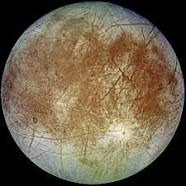
Ganymede is another one of the four Galilean moons and what makes it so special is its size. Ganymede is the biggest known moon in our solar system, so big in fact that it has its own magnetic field. It is the only moon big enough to have this field and since it’s so big, it could be classified as a planet. Ganymede is bigger than Mercury and could easily exist as a ninth planet. The only thing stopping Ganymede from reaching “planet” status is Jupiter. Ganymede orbits Jupiter and thus is bonded to it by gravity. This makes it a moon and a natural satellite, but not a planet.
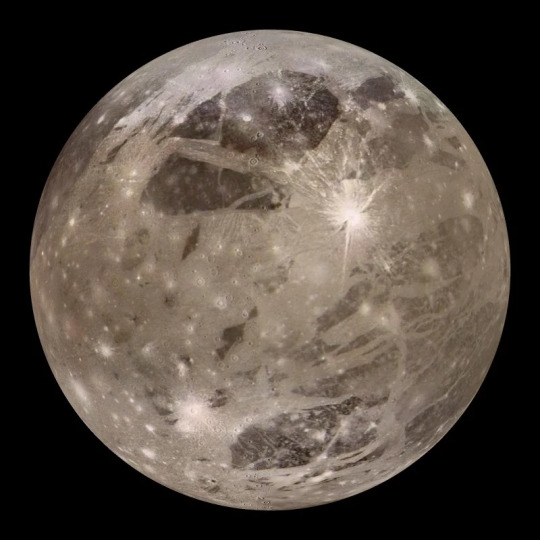
Next is Titan, the second biggest moon in the solar system. Titan orbits Saturn and it has massive deposits of oil and natural resources. Only 25% of Titan has been mapped, and scientists estimate that that quarter of Titan contains over 100 times more natural resources than all of Earth. If space travel was to be popularized, this would definitely be a place of interest.
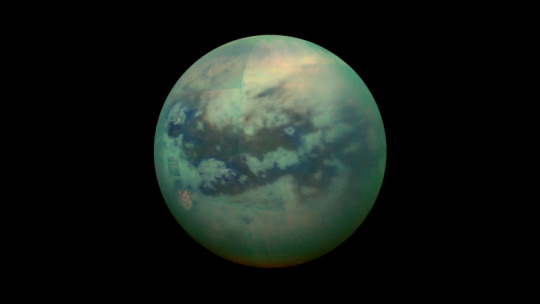
Jumping out way into the outskirts of the Solar System we find Neso. Neso is a moon of Neptune and is the most distant moon of any planet. Neso’s orbit is irregular meaning that its distance from Neptune varies depending on where it is in its orbit. There are certain parts of the orbit when Neptune and Neso are further apart from each other than the Sun and Mercury. In numbers, the distance between Neso and Neptune is about 44.7 million miles.

Going back a little closer to Earth we find Miranda, the fifth largest moon of Uranus. Miranda is a jumble of different terrains all right next to each other. There are cliffs and raised plateaus next to perpendicular deep cutting canyons and craters. It has been speculated that Miranda’s surface had been shattered into pieces and reassembled multiple times. Still, no one really knows what caused such a mess of a surface on this moon.
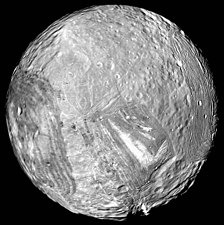
1 note
·
View note
Text
The Game of Football on the Front Lines of WW1
So did you hear about the game of football (soccer) that was played by enemy soldiers during World War 1? No? Well, you’re about to hear it.
So for some background, in Europe Christmas has a lot more meaning than it does for us here in America. Christmas is more traditional and ceremonial in Europe as opposed to the superficial feel it has here. Fun Fact, when the Puritans landed in Boston and got their charter from the King, they banned Christmas. If anyone displayed anything resembling Christmas cheer, they would have to pay a fine. However, when immigrants came from Europe during the World Wars, they brought a love of Christmas with them. Over time Christmas got integrated into American Culture and became the holiday it is today.
So what does any of this have to do with a football game during WW1? Well, during the war when Christmas day came the Germans celebrated, despite being in the middle of trench warfare. They sang their own Christmas Carols and eventually, their singing carried over across No Man’s Land. When the British and French overheard the Germans singing carols, they broke out into their own Christmas carols. Over time an unspoken truce developed between the two sides. Even though they were in the middle of a War, troops met in No Man’s Land between the trenches. There was a sense of Christmas cheer in the air and the troops on both sides began to lay down their weapons. Some troops happened to possess a football and pretty soon they were all playing football.
While there is some debate about this subject of football on Christmas (how many sectors had a cease-fire, if the games of football played between different nations or only among allied nations etc.), it is still widely accepted among historians that games of football were played during WW1 on No Man’s Land. And I think that’s pretty cool.
2 notes
·
View notes
Text
An Interview of Duru
Duru is a baker; she always has been. She bakes pastries and sweets, sharing the food with her family once it’s finished. Duru says that she loves to bake and that she does it whenever she has the time. She says that she got a love of cooking from her mother and that recipe she used to bake the cookies was her mother’s. However, before baking her cookies, she lost the recipe. Not being one to quit, Duru did her best to assemble the cookies from sheer memory.
She recently embarked on a new baking quest where she made her own version of a popular dessert. She crafted a unique batch of cookies, unique in the sense that they are healthy. The cookies were primarily comprised of oats, flour, baking powder, butter, and vanilla with a few other minor ingredients. Duru made them and tasted them. She decided to share her recipe with the world, wanting to spread the knowledge to others.
Duru wrote a short essay on how to create this delicious healthy snack for those who wanted to manage their weight. In the article she asks the reader, “Have you ever wanted a sweet treat but did not want to feel guilt afterwards? Then this recipe is for the one for you.”
When interviewed about the essay, Duru lamented that she chose to write the essay about baking cookies, because the other things she knew how to do were hard to compress into a step-by-step format. She is proud of her writing, specifically how the instructions can be interpreted by nearly any audience. When asked further about the essay, Duru explained that she wrote the essay in a somewhat informal, somewhat formal tone. She also included a fair share of encouragement, targeted at the reader, throughout her essay. She did this to keep them going, because ultimately what she wanted to do was inspire others to take an interest in cooking.
0 notes
Text
The Black Hole
I have always loved space. When I was young I read about the planets and other simple astrological things. As I got older, I moved on to more advanced and more intriguing celestial bodies out in the infinite depths of space. While there are many I could talk about, like a planet where it rains glass sideways (feel free to ask me about that one in class), I want to talk about something that I have taken much more interest in - black holes.
When a star dies there are two ways they can go. Smaller stars will simply fade out - dim and shrink. However, if they are bigger when they shrink they will begin to become denser. The atoms in that star will get closer and closer together, reducing the star to less than 0.0000000000000000000001% of its original mass. When this happens, massive amounts of energy that had been holding the star together are released. This release of this energy results in the greatest form of explosion known to humankind: a supernova (or a hypernova if the star that died was humongous). This powerful explosion leaves behind a black hole, a ridiculously dense celestial body with the mass of a star.
The newly-created black hole will move around throughout space if acted on by other forces of gravity. Black holes will “eat” anything that comes close enough (even other smaller black holes). The closer something gets, the stronger the gravitational pull. Eventually, anything that gets close enough will be ripped apart and absorbed. There is a point in a black hole’s gravitational field called the “event horizon”. If anything passes this point, it will never come back. The event horizon is the point of no return, where no amount of force could ever be enough to break free of the black hole's grasp.
Each and every celestial body that a black hole consumes adds mass and increases its gravitational pull. In fact, the reason that they are black is due to that gravitational pull. Humans see things because light reflects off of objects. Whatever light isn’t absorbed is reflected back at us. Black holes are so strong that they absorb light photons. No light is reflected back to our eyes and in the absence of light, all we can see is black, a hole in space.
There are many different types of black holes. Each black hole falls into one of four categories depending on their mass: primordial, stellar mass, intermediate mass, and supermassive. Primordial black holes are completely theoretical black holes that have a mass of a planet. There has never been an actual sighting of these black holes. If Earth became a black hole (which would never happen by all known laws of science) it would shrink to the size of about Central Park in NYC. Earth would still have the same mass and gravitational force, but it would be a lot smaller and a lot denser. Stellar mass black holes are black holes that formed from stars. All black holes start out as stellar mass black holes but depending on how much they “eat” they might be able to advance into the next two categories. Intermediate mass black holes are black holes that have eaten over a thousand stars. Supermassive black holes are big enough to be at the center of galaxies. In fact, our galaxy has a supermassive black hole at its center. Everything in the Milky Way, including our solar system, orbits Sagittarius A, a supermassive black hole. It has a radius of 2.7 million miles and a mass of about 4 million suns. It is also part of the constellation Sagittarius.
However, Sagittarius A, big as it is, is far from the biggest known black hole. That title goes to S5 0014+81, ominously nicknamed “The Destroyer of Worlds”. It has a radius of 75 billion miles and an estimated mass of 40 billion suns. Describing the size of this black hole is impossible. The human mind literally cannot accept just how ridiculously large this black hole is.
I find black holes so interesting because of just how scary they are. These are lifeless, unfeeling celestial bodies are bigger than any human can possibly imagine. They drift through space sucking up anything that dares get close enough. Nothing is strong enough to resist their pull, not even other, smaller black holes. They are truly the most powerful things in existence and humans are literally nothing to them. They could drift near earth and swallow it up without even knowing that it was there.
Before I go, if you want to do something cool, you can actually hear a black hole. The sound of a black hole sucking in a star was recorded and the audio was altered so that it could be heard by human ears. While the actual sound is much, much deeper, you can watch this video to hear what a black hole sounds like: https://www.youtube.com/watch?v=jYiWNLv-Bgg. If you want to see a black hole, look no further than Sagittarius A. On a clear night you can see the center of the Milky Way. Look for a big stretch of stars in the sky. If you follow the stretch eventually you will come across a big bulge of stars. That is the center of the galaxy and that is where Sagittarius A lurks.
3 notes
·
View notes
Text
One down, Two to go
I recently performed the “Fall Production” for the first time in front of a large crowd. I have had very little drama experience before this play and it has been eight years since I was in a school play. While performing this play, I was overwhelmed with a sense of dread and curiosity. I had one speaking role towards the end of the play and every moment I spent in the wings reminded me of that scene. I knew my lines and my cues, yet I found myself repeating my cues and my lines over and over again in my head.
While I wont go into much detail, for those who haven’t seen the show yet, but my role involved a lot of physical action. I also had lines that were synchronized with my actions, which made it hard for me to do either since I had to do both simultaneously. I then had an action that implied violence, and of course I couldn’t actually be violent on stage. Another actor and I had to mime an event that ended with me “shoving” her to the floor. Then, after that I would say a few more lines and then exit stage left. I also had a few more lines later on in that scene, but that moment of fake violence and action, was the moment that I dreaded.
So I waited for it to come, my anxiety meters steadily creeping upwards. The scene came where I had lines and I waited in the wings with the other actor. I had memorized the lines of the actors currently on the stage. I knew my cue was approaching fast and I counted the lines left before my cue. Five lines, four lines, three lines, two lines...
The last line came and I quickly bolted onto the stage. I went through my actions and when the scene of implied violence came, it went off without a hitch. I walked off the stage after saying my lines and rejoiced that I had done everything perfectly. I was so happy in fact, that I almost forgot to go back on stage later in the scene. After that though, I was done with all my major lines and cues. The play continued on and ended. I went home feeling accomplished and relieved beyond belief. I had done it! I had done everything perfectly! I didn’t mess up my lines, and the action had been realistic and believable! I sat down on my couch to relax after giving the best performance I had ever given.
Then I remembered that I still had to perform the play two more times.
4 notes
·
View notes
Text
Driving
Recently I had a new experience that was a vivid combination of confusion, excitement, adrenaline, and fear. When, I was coming back from a Boy Scout’s Eagle project (building a boardwalk). I was with my friend, Samuel, and his mom. When we were driving home we stopped in an empty parking lot. Samuel had been learning to drive because he was nearly sixteen and this was where he practiced. Samuel had been talking to me about driving around here, and he had wanted to show me. His moth stopped the car and switched seats with him. Samuel put on his seat belt, and put the car into drive. He began to drive us around the parking lot and, while he didn’t have the same grace and fluency as his mother, he was able to maneuver around the parking lot with precision. He completed two loops around it and parked in the center. We sat in silence for a moment before Samuel’s mom turned to me. She asked if I wanted to drive. I had literally no experience in the realm of driving, but for some reason I said yes.
Samuel got out of the driver’s seat and I took his place. I looked around at all the controls and I was suddenly reminded of one key fact. I had no idea what the heck anything actually did. Samuel’s mom could sense my bewilderment so she showed me how to switch the car from park to drive by pressing the button on the backside of the lever. The car began to inch forward and I freaked out a bit because I didn’t know the car did that automatically. I began to drive around, very slowly and nervously. The pedals had been much more sensitive that I had expected and I was barely pressing on them for fear of speeding forward out of control. Which I did. I nearly crashed the car into a tree before braking as hard as I could. After that I drove around for a little while longer before parking the car (best parking job I ever did, may I add). Samuel’s mom took over for me and we drove back to their house.
Despite almost crashing a car, that experience has stuck with me. I know one day that driving will come as naturally to me as breathing and it was good to get a feel for it now. I also now know a bit more about how to work a car; signaling and such.
1 note
·
View note
Text
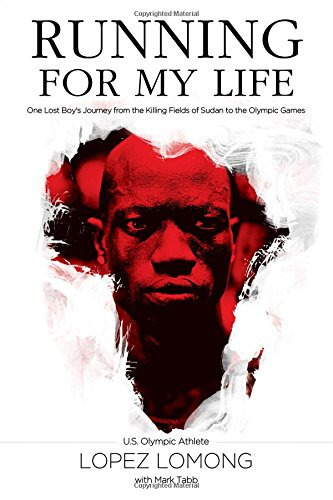
This is a book I’m reading for Facing History and Ourselves. I’ve read the first twenty five pages and this book and so far it has been an emotional roller coaster. It starts with the author, Lopepe, in Sudan when he was six years old. He is at a church service when a group of radical rebels show up. They kidnap Lopepe along with dozens of other children ages five to thirteen. They are all cooped up into a truck and taken to a concentration camp. There the strong children are separated from the weak ones. The strong are taught to be soldiers and the weak are left in a hut to die. Lopepe is part of the weak group and he manages to befriend three other boys that came from his village. They all plan an escape and execute it after three weeks at the camp. They escape at night, moving incredibly slowly for fear of alerting the guards. They spend nearly fifteen minutes escaping the hut, and another fifteen making it to the perimeter fence. One they make it through a pre-cut hole they all book it into the African jungle. That’s where I stopped read. As I said earlier, this book was an emotional roller coaster to read. It was devastating to hear him describe the parents begging the rebels to release their children. It was also disheartening to listen to Lopepe list the living conditions at the concentration camp. I was on edge the entire time during the escape. Especially when they crawled through the grass no more than a yard from the guards. Their escape left me with a sense of hope and freedom. It was empowering to see them finally escape after weeks of hardship. I can’t wait to continue reading this story tonight and find out what they do after they escape the camp.
2 notes
·
View notes